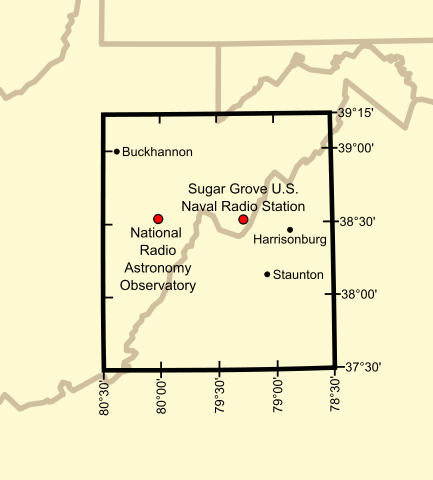The Last Exit on the Information Superhighway

Ten years ago, the northeastern part of the United States and much of the Canadian province of Ontario lost power in what is still one of the largest prolonged power outages in history. Over 50 million people lost power for at least six hours, with some not regaining access for a few days. The blackout led to a handful of interesting cultural moments; for example, on the streets of Manhattan, it was not uncommon to see people engaging in ad hoc pizza arbitrage, buying pies at normal prices (kept there due to regulations against price gouging) and then re-selling slices for $3 to $5. With no access to cell phones or in-home Internet, news spread mostly via word of mouth. For a brief moment, the information superhighway came to a sudden halt.
For one region of West Virginia, that latter part is everyday life. They have electricity, and yes, you can go online in your homes, provided that you have an Ethernet cable. But they don’t have wifi or cell phones. The federal government doesn’t allow for that.
Welcome to the U.S. National Radio Quiet Zone.
Mapped out above, the Quiet Zone is centered around two important radio telescopes — the National Radio Astronomy Observatory (NRAO) and the Sugar Grove Naval Radio Station, both in West Virginia. The two are used to collect data from satellites or from whatever else may be out there sending signals from space. While radio scopes, generally, can collect data from great distances, a lot of things interfere with their work. Chief among those things are, of course, radio broadcast towers, but that was an easy thing to account for when the NRAO was first opened in 1956. In 1958, the Federal Communications Commission (FCC) created the Radio Quiet Zone, preventing radio broadcasters within NRAO’s range. But technology has advanced dramatically since the 1950s, and with it has come many challenges for the FCC in regard to this area. For example, as CBS reported, one can’t use a cell phone within the Quiet Zone — “it would mess up the signals and make it much harder to study [space],” the president of the company which runs NRAO explained.
In May of 2013, a technical specialist at NRAO named Chuck Niday spoke with NBC News about his role in enforcing the Quiet Zone’s rules, and it isn’t very heavy handed. CB radios and police and fire communications are allowed. As for the stuff that isn’t? Niday explained that “we just go in and ask them to turn it [the offending device] off. People are usually pretty cooperative.” And as NBC News further reported, if the people aren’t cooperative, Niday and others can’t do much immediately — they can simply send a report back to the FCC. But increasingly, this is becoming less and less true. As Slate reported, Green Bank, West Virginia (population 150 or so) — where NRAO itself is located — has become a respite for those who describe themselves as “electrosensitive.” One such person, a lady named Diane Schou, moved to Green Bank in 2007 because she believed that various signals were causing her constant headaches. Whether that’s true or not is anyone’s guess, but despite moving to a town without a grocery store or restaurants, she was happy with her decision.
As for emergency phone calls? Green Bank has a simple if not forgotten solution — the town still has pay phones.
Bonus fact: Where did all those pay phones go, anyway? In New York, at least, some of them are going under a bridge. As Gothamist reported, a photographer found a “veritable pay phone graveyard underneath the elevated West Side Highway” which runs up the Hudson River’s edge. So he took pictures of the hundred or so now-disabled pay phone booths (with phones mostly removed), which you can view, here.
From the Archives: Off the Hook: Pay phones as fishing gear.
Related: “The Radio Sky and How To Observe It” by Jeff Lashley. Three stars on four reviews, but there aren’t a lot of options out there about radio astronomy.
